
How to grow a rose bush in a pot?
Our tips to plant and care for a potted rose bush
Contents
Roses are garden essentials. Romantic style or English-inspired, white garden or colourful, wild-looking flowerbed, these bushes suit every taste.
If the largest varieties are grown in open ground, more compact varieties of modest size are ideal for growing in pots. They will only need a few maintenance gestures to thrive and flower.
So don’t hesitate to adopt a potted rose, to enjoy their magnificent flowering on terraces, balconies or in small gardens.
Here are our recommendations to succeed in growing roses in pots or tubs, from planting to the regular care they require, including precautions to take.
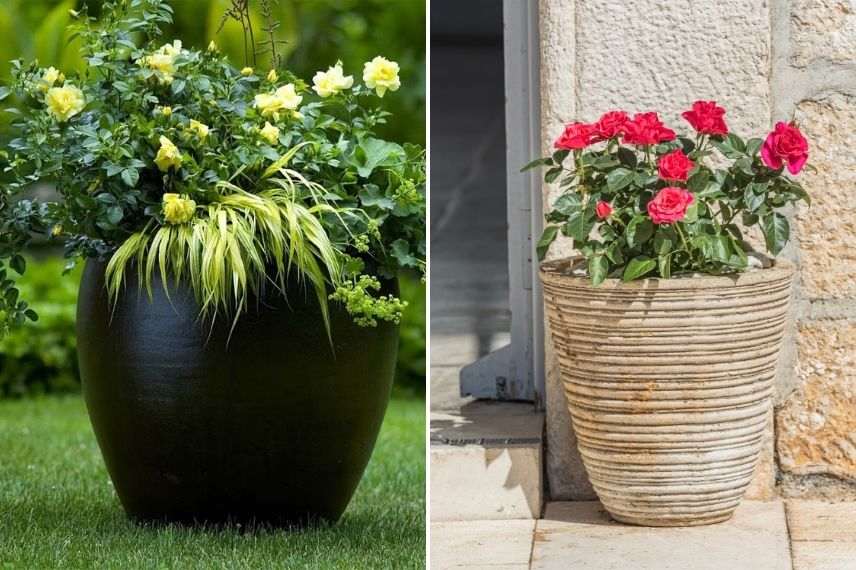
Which rose varieties should I choose for growing in pots?
For container growing, favour varieties of small size, with limited development and slow growth: miniature roses, shrub roses or ground-cover roses. Their compact, bushy habit will be perfectly suited to this type of growing.
By contrast, vigorous roses such as large climbers or liana roses, shrub roses or weeping roses have rapid growth, strong root development and require a lot of space. They are therefore obviously much less suited to growing in pots.
To help you decide, find our selection of 8 roses perfect for growing in pots.

Miniature rose ‘Fête des Mères’, shrub rose ‘Pacific Dream’ and ground-cover rose ‘Happy Chappy’
When to plant a rose in a pot?
Planting period depends on how your rose is supplied:
- in pot or container
- as bare roots
Container-grown roses can be repotted throughout the year.
Bare-root roses are lifted from the ground during dormancy. They should be potted between November and March, ideally in autumn, on the day of receipt or purchase to prevent roots drying out.
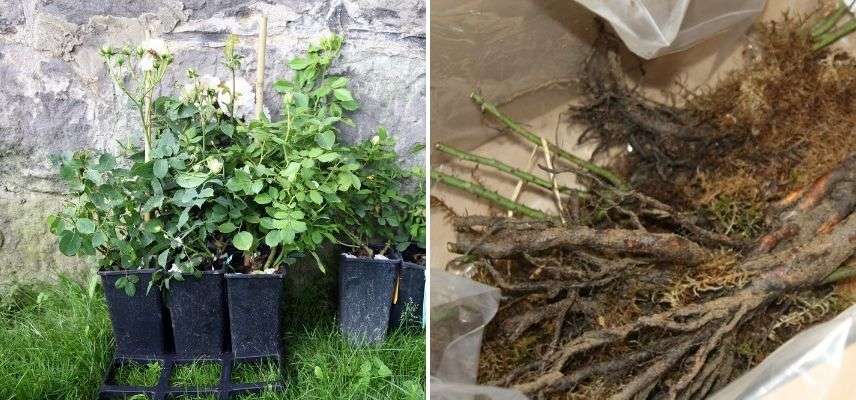
Discover other Roses for pots
View all →Available in 0 sizes
Available in 1 sizes
Available in 1 sizes
Available in 1 sizes
Available in 1 sizes
Available in 1 sizes
Available in 1 sizes
Available in 2 sizes
Available in 1 sizes
Available in 1 sizes
How to grow a rose bush in a pot?
Choosing a container
Container size is essential to successfully grow a rose in a pot. It must take into account the rose’s development and its size at ripeness.
Roots of the bush grow vertically and deeply; choose a container accordingly: the smallest roses (miniature, dwarf) will manage with 40 cm diameter and depth, while standard roses will require 50–60 cm.
The container must have drainage holes, to allow excess water to drain away without risking damage to the roots.
Finally, regarding material, we recommend choosing a terracotta container, which, thanks to its natural porosity, allows better aeration of the substrate, limits drying out and development of disease. The container should simply be protected from severe frost in winter to avoid risk of cracking.
Wooden planters can also make good containers, but will require regular maintenance to prevent deterioration and rot over time.
While plastic has many advantages (economical, lightweight, wide choice of colours), it offers less stability and tends to favour extreme conditions: poor insulation in winter and moisture retention, dryness in summer.
Substrate
Roses appreciates rich, fertile soils, essential to enable abundant flowering, particularly for nutrient-hungry perpetual varieties that flower several times a year.
Substrate should therefore be carefully chosen to provide the necessary nutrition to your potted rose, while being well draining to prevent water from stagnating and risking root rot.
Opt for a mix of :
-
- 1/3 potting compost for roses or compost, promoting rooting and growth
- 2/3 garden soil or potting compost, promoting water retention
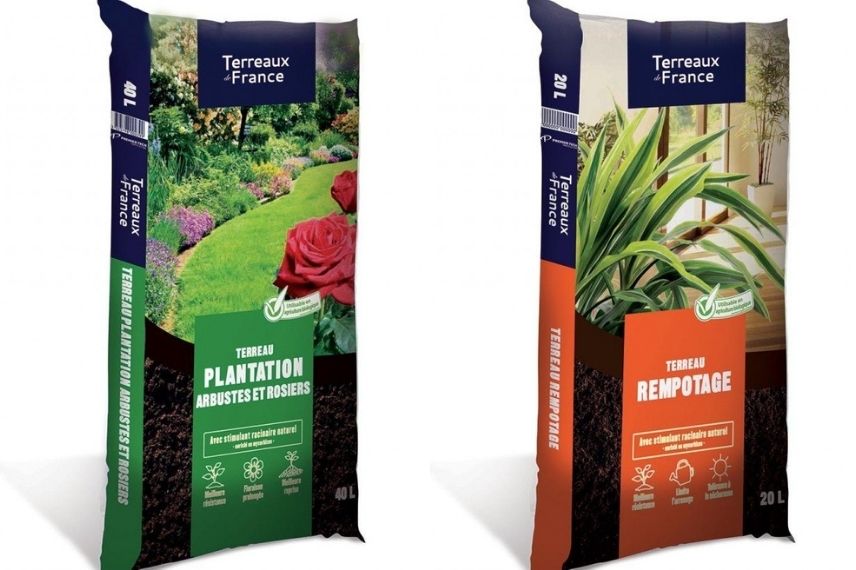
Make a mix of potting compost for roses and potting compost
Planting
Before planting, soak the roots of the rose in a bucket of water at room temperature.
Bare-root specimens will be pruned and coated with pralin the day before pot planting (the pralin can be bought or homemade).
-
- Place a layer of draining materials at the bottom of the container (clay pebbles, gravel, pouzzolana, terracotta shards, …) in a thick layer of about 5 cm.
- Fill one third of the pot with substrate.
- Place the rose centrally in the pot. The graft point (junction between stems and roots), from which new shoots arise, should sit level with the top of the pot.
- Top up with substrate to the rim of the pot, taking care not to cover the graft point.
- Firm gently with your fingers, then add substrate if necessary.
- Water generously.
- Mulch the surface of the container with mulch for roses, straw or RCW to retain moisture and prevent development of adventive (“weeds”).
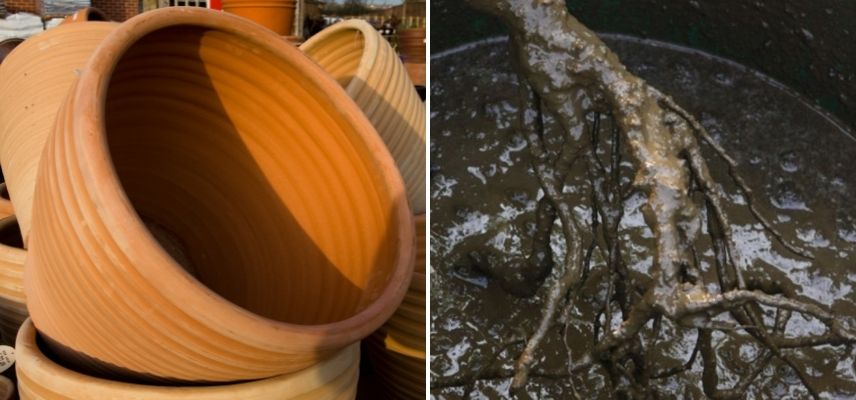
Left: terracotta pot; right: coating roots of rose with pralin before planting
Exposure
Potted rose is ideally placed outdoors. Choose a very sunny spot, while avoiding exposure to the sun’s scorching rays during summer.
Once established, favour a fixed position and avoid moving the pot, so the rose can acclimatise to its environment.
Read also
Caring for roses: the right equipmentCare and maintenance of potted roses
Watering
One of the key points when growing rose in a pot is managing watering. Substrate tends to dry out much faster than in plant grown in ground, which can use roots to draw water from depth.
Ensure regular watering as soon as the top few centimetres of substrate become dry, preferably in the morning or late afternoon.
In summer, increase frequency and amount of watering, without drowning substrate. At that time, except after heavy rainfall, rainwater is generally not sufficient to provide adequate watering.
Never leave stagnant water in the saucer, which could asphyxiate roots: remember to empty it after about twenty minutes.
Fertilising
Roses are particularly greedy during growth period. Grown in pot, they therefore need careful feeding to ensure abundant flowering and make them more resistant to disease.
From March to September, use a special rose fertiliser, which will feed and strengthen the plant. Prefer small packages and follow dosages prescribed by manufacturers.
Liquid fertilisers act immediately and disperse quickly in soil. They require application every 15 days or monthly.
By contrast, solid fertilisers (granules, sticks) release more slowly. They should be renewed about every 3 months on average, in early spring (March), in summer (June), then in early autumn (September).
You can also choose regular applications of well‑decomposed household compost as amendment.
For more details, find all our advice on how to fertilise roses.
Pruning
As for specimens grown in the ground, pruning roses in a pot is essential to ensure maintenance and abundant flowering.
Cut off faded flowers as you go, to prevent rose wasting energy and to encourage development of new buds on perpetual roses. Use pruning shears that are sharp and well disinfected and prune just above an eye (bud).
Harder pruning is carried out according to rose variety. For more information, feel free to consult our article on how to prune roses in pots successfully
Top‑dressing
Each year in spring, carry out top‑dressing of rose in pot, that is surface renewal of substrate.
- Lightly fork top layer of soil, without damaging roots.
- Remove the first 3 to 4 centimetres of substrate.
- Add new compost, mixed with fertiliser, household compost or well‑rotted manure.
- Water generously.
Diseases
Roses are susceptible to cryptogamic diseases (fungi), which mainly attack foliage: rust, powdery mildew, downy mildew (black spots) or botrytis (grey mould).
As prevention:
- always avoid wetting rose foliage when watering;
- do not neglect watering or regular supply of fertilisers;
- remove dead leaves as you go, to encourage aeration;
- opt for varieties known for disease resistance, such as ADR roses.
If noticed at first symptoms, these diseases can generally be treated effectively without greatly affecting rose health.
In case of confirmed disease, we recommend turning to natural solutions (plant manures, fungicidal products usable in organic agriculture, Bordeaux mixture used sparingly…), to be applied in late afternoon to limit impact on beneficial insects.
For more details, consult our article on different rose diseases and their treatments.
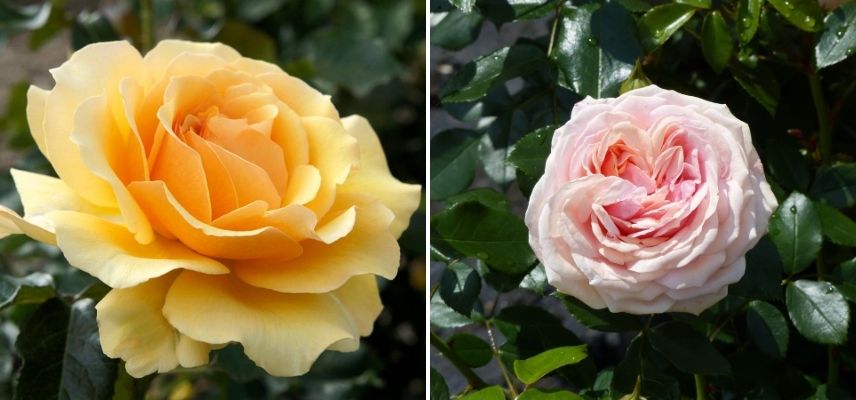
Deux variétés ADR plus résistantes aux maladies : rosier ‘Amber Queen’ (photo T. Kiya) et rosier ‘Joie de vivre’
Overwintering
Protection of roses in pots during cold season will of course depend on hardiness of variety chosen and climate of your region.
However, bear in mind that a rose grown in pot will be less resistant to cold and winter damp than a rose grown in ground.
In regions with harsh winters, we recommend as soon as temperatures approach freezing to:
-
- cover rose with a winter fleece (you can also simply wrap pot in insulating bubble wrap without covering branches);
- increase mulch thickness at plant base;
- insulate pot from ground by placing on cardboard, polystyrene, …

Roses require careful maintenance for watering, fertilising, pruning, disease prevention and overwintering
Further reading
- Discover all our tips to successfully grow climbing roses in pots.
- Subscribe!
- Contents
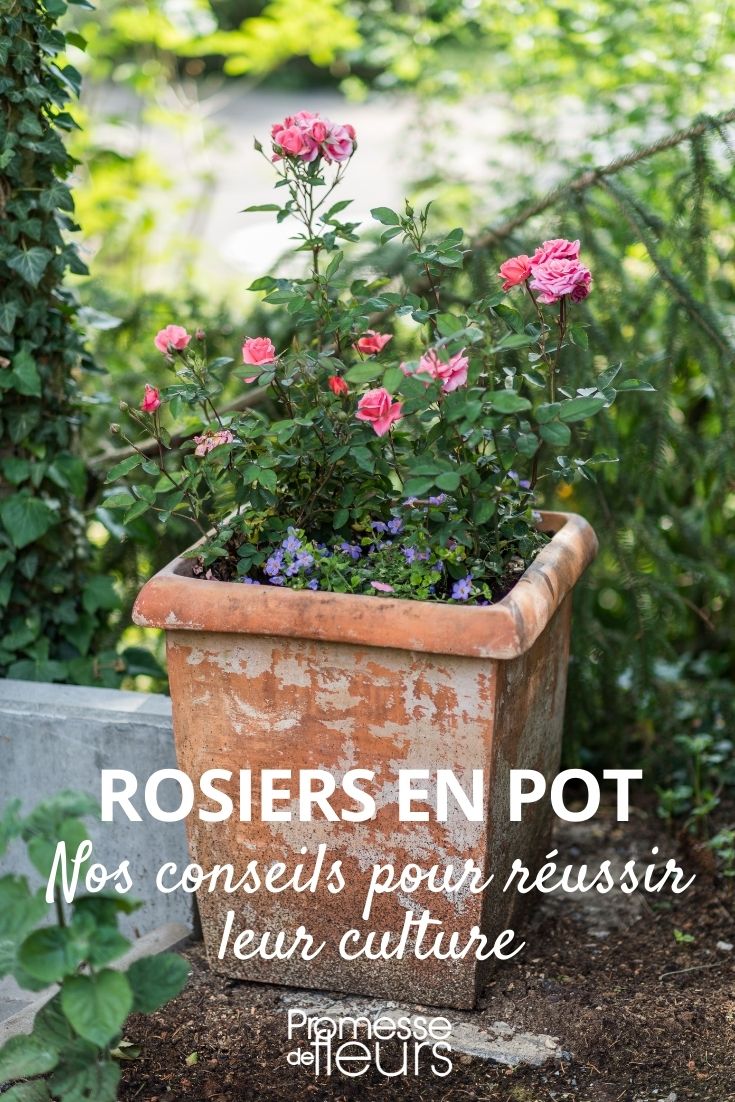

































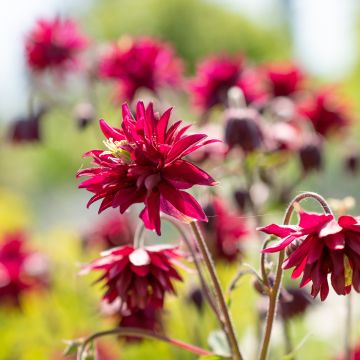
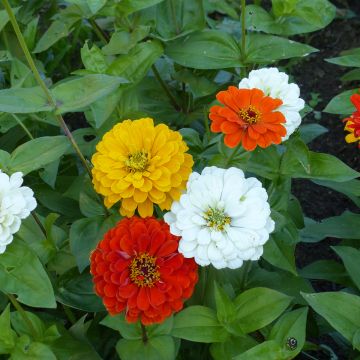
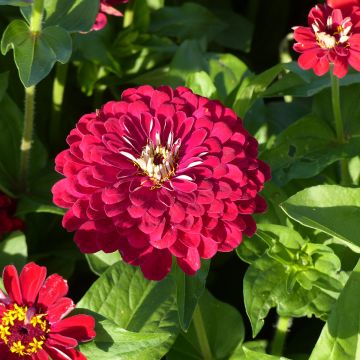
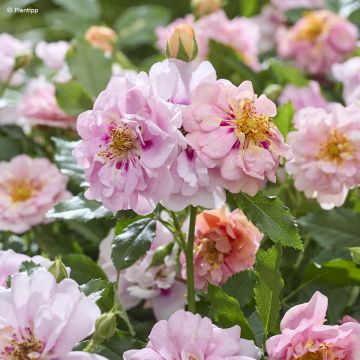
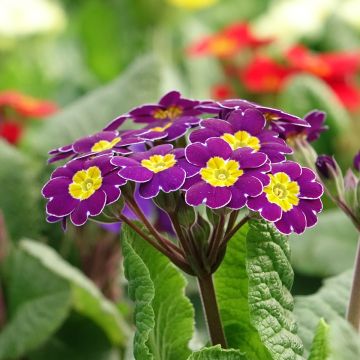
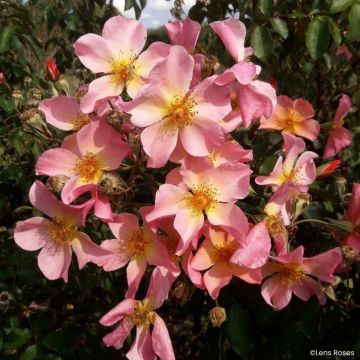

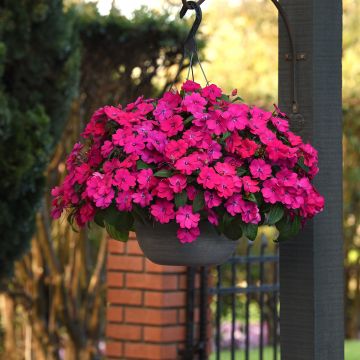
Comments